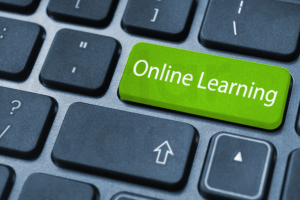Introduction
The 21st century has witnessed a technological revolution that has transformed nearly every aspect of our lives, including education. As traditional classrooms evolve to meet the demands of the digital age, Educational Technology, commonly referred to as EdTech, has emerged as a powerful force driving educational innovation. In this article, we will delve into the latest trends in educational technology and explore its profound impact on modern education. From interactive learning platforms to virtual reality simulations, EdTech is reshaping how students learn, teachers instruct, and institutions operate.
The Evolution of EdTech
Educational Technology has come a long way since the early days of computer-assisted learning. Today, it encompasses a wide range of digital tools, applications, and platforms designed to enhance and enrich the educational experience. From elementary schools to higher education institutions, EdTech is influencing teaching methods, curriculum design, and student engagement. Here are some of the key areas where EdTech is making a significant impact:
- Online Learning Platforms: The rise of Learning Management Systems (LMS) like Moodle, Canvas, and Blackboard has made it possible for educational institutions to offer courses online. These platforms facilitate the management of course materials, assignments, and assessments, providing students with a flexible learning environment.
- Interactive Content: EdTech enables the creation of interactive and multimedia-rich learning materials. This includes e-books, video lectures, interactive simulations, and gamified lessons, which can make learning more engaging and accessible.
- Adaptive Learning: Adaptive learning platforms use data analytics and machine learning algorithms to personalize instruction. They assess students’ performance and adapt the content and pacing to meet individual needs, providing a customized learning experience.
- Virtual Reality (VR) and Augmented Reality (AR): VR and AR technologies have the potential to revolutionize education by creating immersive learning experiences. Students can explore historical sites, dissect virtual organisms, or engage in realistic simulations, enhancing their understanding of complex subjects.
- AI-Powered Chatbots: AI chatbots are being used for administrative tasks, such as answering student inquiries, providing course information, and even offering tutoring support, enhancing efficiency and accessibility.
- Collaboration Tools: EdTech tools like Google Workspace for Education and Microsoft Teams enable collaboration among students and teachers, fostering communication and teamwork.
![Advantages and Disadvantages of Artificial Intelligence [AI]](https://www.newlookeducation.com/wp-content/uploads/2023/09/Advantages_and_Disadvantages_of_artificial_intelligence.jpg)
Benefits of EdTech
The integration of EdTech into education offers numerous benefits, both for students and educators:
- Enhanced Engagement: Interactive and multimedia content captures students’ attention and makes learning more enjoyable.
- Personalized Learning: Adaptive technologies ensure that students receive instruction tailored to their abilities and needs, maximizing learning outcomes.
- Accessibility: EdTech can provide education to a broader audience, including individuals with disabilities and those in remote or underserved areas.
- Efficiency: Administrative tasks, grading, and communication can be streamlined, allowing educators to focus more on teaching and less on paperwork.
- Global Connectivity: EdTech connects students and educators across the globe, facilitating international collaboration and cultural exchange.
Challenges and Concerns
Despite the promise of EdTech, its implementation is not without challenges and concerns:
- Digital Divide: Not all students have equal access to technology and high-speed internet, creating a digital divide that can exacerbate educational inequalities.
- Privacy and Security: Protecting student data and ensuring the security of online learning platforms is a critical concern. Data breaches can have serious consequences.
- Quality Control: The proliferation of online content raises questions about the quality of educational materials and the reliability of sources.
- Teacher Training: Educators require ongoing training to effectively use EdTech in the classroom. The rapid pace of technological change can make this a daunting task.
- Overreliance on Technology: While EdTech is a valuable tool, there is a risk of overreliance on technology at the expense of essential human interaction and critical thinking skills.
Conclusion
Educational Technology is revolutionizing the way we teach and learn in the 21st century. Its potential to enhance engagement, personalize learning, and improve educational outcomes is undeniable. However, it also presents challenges that must be carefully addressed to ensure equitable access, data security, and effective integration into classrooms. As EdTech continues to evolve, it will play an increasingly pivotal role in shaping the future of education, helping to prepare students for a world that demands adaptability, digital literacy, and lifelong learning. Embracing these innovations while remaining vigilant about their impact is essential as we navigate the ever-changing landscape of modern education.













![Advantages and Disadvantages of Artificial Intelligence [AI]](https://www.newlookeducation.com/wp-content/uploads/2023/09/Advantages_and_Disadvantages_of_artificial_intelligence-74x55.jpg)

Add Comment